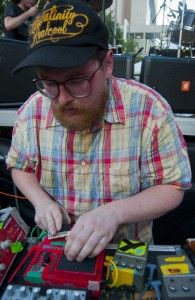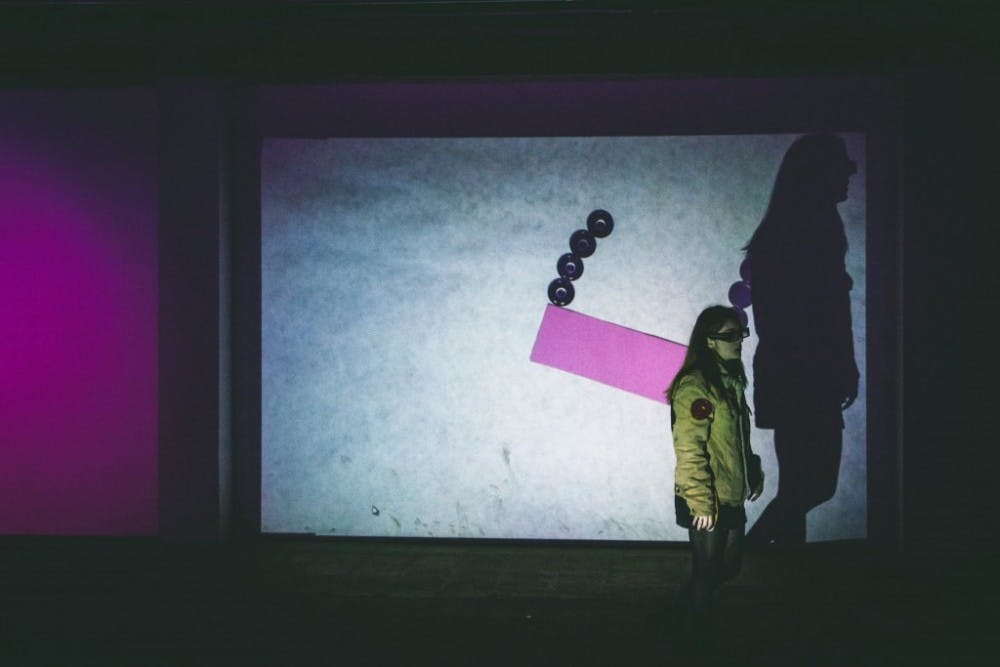Light City Baltimore bathed the city in lights last week with its inaugural combination of music, lights and innovation that brought together many of the city’s neighborhoods. Perhaps the most interesting thing about it was that the event spread throughout the city, with many attractions in different neighborhoods.
With the goal of fostering artistic talent, unity, innovation and increasing tourism revenue, Light City Baltimore is a hopeful sign of a new tradition with many signs pointing toward the renewal of the event for next year. The event also was an economic boom. This growth rippled through various businesses surrounding Light City Baltimore such as the bars of Fells Point.
Light City Baltimore kicked off on March 28 with a lantern parade, drawing parallels to a similar parade that occurs on Halloween.
The event was modeled after the Vivid Sydney festival in Australia and featured a number of different exhibits that were over a year in planning. Perhaps one of the most ambitious was Light City U, a series of conferences on a number of different subjects. These conferences were based around different themes, including Social Innovation Conference: Reimagining the Status Quo. There were also conferences on Health Innovation Conference sponsored by Kaiser Permanente.
A good chunk of the action centered around the Inner Harbor with two of the main attractions, the BGE Light Art Walk sponsored by Baltimore Gas and Electric and Club Light City. The Light Art Walk featured a number of installations by artists both far and near, from New York City as well as a great number that were local to Baltimore City. There were also performances on the Light Art Walk.
There were a number of musical attractions on the various days of the event that appealed to a vast spectrum of musical tastes. From classical music to the more electronic sounds of the Inner Harbor’s Club Light City stage, the festival didn’t disappoint when it came to music selections.
Club Light City featured a broad number of musicians across the valley of electronic music including Baltimore’s own Dan Deacon and TT the Artist, as well as artists such as DJ Robert Garza of Washington, D.C.’s trip-hop legends Thievery Corporation and DJ Jazzy Jeff, best known for his collaborative efforts with Will Smith a.k.a. The Fresh Prince during his heyday of rap in the late-‘80s mid-‘90s.
TT the Artist showcased her trademark hypnotic rapping over Baltimore club beats on March 29 at the Club Light City stage, with a big focus of the performance being dancing as well as a feeling of inclusion. Perhaps the true highlight was a dance competition without losers, or winners, only a wave of support from both TT and the crowd.
Dan Deacon’s performance on April 2 fell victim to a thunderstorm, cutting his set very short. One of the more memorable moments of the weekend arose from Deacon shouting that if they wanted to cut his set short, they’d have to show him the proverbial scissors. Shortly afterwards, his equipment was cut and the organizers made a formal call for shelter to assist in protecting festival-goers from the storm.

During the short amount of time that his set occurred however, Deacon had the crowd moving and swaying to his infectious beats and energetic singing.
Those seeking a greater singing presence could’ve hit the Concert Stage at Harbor East which featured talents such as Bosley, pop rock band Saving Apollo, wavy pop-rockers Fractal Cat and the symphonic tunes of Symphony Number One. The stage’s focus was much more varied than that of Club City Lights.
In another showing of the unity that the festival promoted, a Battle of the Bands took place on the first two days of the festival at the Hard Rock Cafe near the Inner Harbor. The prize for winning was a spot to perform at ArtScape 2016 (the other big Baltimore arts/music festival, as well as the largest free arts festival in America) and the Baltimore Book Festival. This event was sponsored by local historically black university, Morgan State. This event has taken place at other venues in the past, such as Metro Gallery.
Finally, Convergence Maximus, a meeting of classical music as well as rock and roll, was featured at the War Memorial Building near the Inner Harbor. There were riffs on classics such as Beethoven’s Ninth Symphony, as well as renditions of songs from original Baltimore Rock Opera Society productions.
There were also number of non-musical performances, including the Circus of Wonders which had a continuous residency at the Waterfront Garden at Pier 5. The nine-performer group juggled, caused laughs with their own brand of zany comedy and spun fire.
If the Inner Harbor proved too far a drive or walk, there were also a few events occurring locally. There were light displays in the local Hampden neighborhoods, which called to the mind their annual festival of lights on 34th Street for the Christmas holidays. There were also lighting installations in Station North and Little Italy. These light displays were advertised under the Neighborhood Lights Banner.
One thing that anyone could notice at the majority of the scenes within Light City Baltimore was the number of children crowded around with their parents. The kids laughed and danced during the performances that occurred throughout the week. Light City Baltimore is a sign of a changing Baltimore, with more events occurring in it than ever, and the children are who it truly affects, since it gives them a positive outlet for releasing artistic energy. These kids are the artists, politicians and possibly Johns Hopkins University students of our future, so it could bring a smile to anyone’s face to see just how much fun they had during the week of lights.
Light City Baltimore offered something for everyone, whether it was performance arts, academic talks on ways to enhance Baltimore, fancy light shows or the chance to let loose and dance. Light City Baltimore came through in all regards and will be a treat if it returns.





